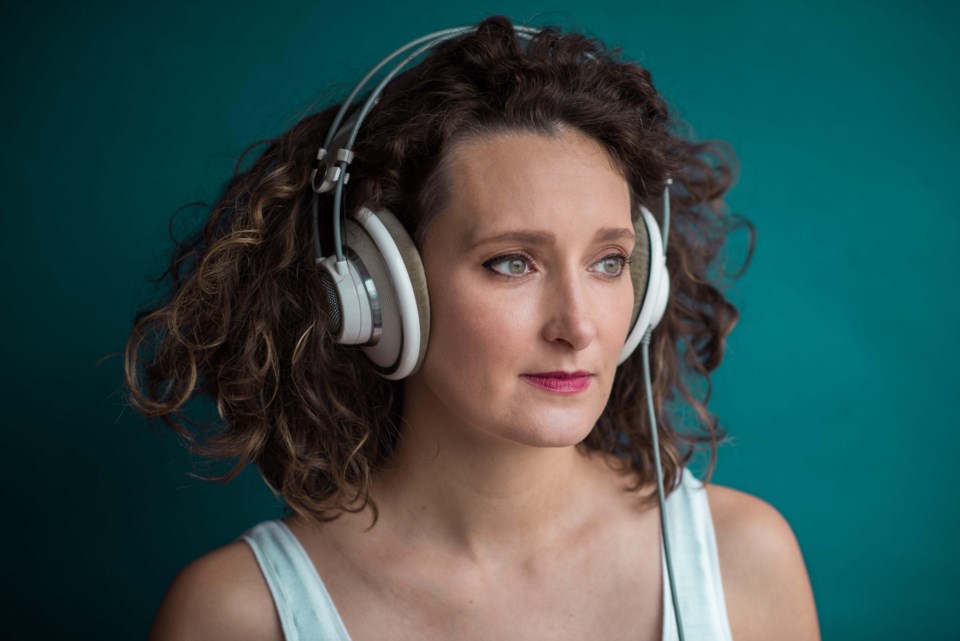Composer Zosha Di Castri has hit her stride composing new cutting-edge works that achieve international renown and resonate with today’s changing landscape.
As part of the Edmonton Symphony Orchestra’s New Music series concert titled Of Time & Flames: Poetry of Music, Di Castri premieres Time-Time-Time, a boundary-stretching piece, on Thursday, Nov. 30 at Winspear Centre.
A graduate of St. Albert’s École Secondaire Sainte Marguerite d’Youville, the multi-talented composer decamped to New York, teaching and composing at Columbia University via Montreal’s McGill University and Paris’s Sorbonne.
Her "New Creation" style challenges existing models, and Time-Time-Time stirs up a discordant, haunting elegance. In addition to composing and teaching, Di Castri is also a mother, and she writes employing deeply personal feelings many of us have experienced.
In addition, the concert showcases the winner of the 2023 Young Composers Project for high school students. This year’s recipient is Ben Gartley’s composition, Redemption Sought. Di Castri was also the recipient of this exclusive club in 2002.
She will not attend the concert and was unavailable for an interview because of a heavy workload. Below are five questions the Gazette submitted to her.
Q. What was the inspiration for Time-Time-Time?
A. Time-Time-Time explores the different ways we experience the passage of time — at times fast, at times slow, and sometimes strangely both, simultaneously. In the past years of pandemic isolation, many of us have reflected on the distorted perception of time. In addition, I was thinking about this in the “before-times,” in relation to the early months of caring for an infant. Here, days and nights intertwine, sleep is fitful and interrupted, and life slows down to a baby’s pace. And yet, one day they are suddenly smiling, then sitting, walking, talking, and it seems impossible that it could all happen so very quickly. I was curious to see how these experiences of temporal disintegration and distortion could be expressed through music, and what role the body might play through performance, in affecting our perception of time. How does it look to play something fast? To play something slow? To feel time in different ways, physically, as well as sonically, psychologically, emotionally? Maybe the same could be asked of listeners: how does the body feel when experiencing fast or slow music or the two concurrently?
Q. Were any collaborators involved, and if so, what did they bring to the project?
A. This piece was developed through a series of workshops which encouraged close collaboration with the incredible musicians of the Grossman Ensemble in Chicago, and with the guidance of conductor Jim Baker. This unique program was founded by composer/director Augusta Read Thomas, who runs The Chicago Center for Contemporary Composition. During the first workshop, I just had some very preliminary sketches, sometimes in the form of drawings or verbal instructions, so the musicians’ input was substantial in the development of the work. Because the workshops were recorded, we could try out various possibilities, which I could then revisit back at home to inform my compositional decisions. I am very grateful to them for their gift of inspiration, opportunity, time, feedback, and open-mindedness.
Q. How many movements are there, and what elements are you trying to convey in each one?
A. There are no movements in the piece. It is a single flow of music.
Q. In what ways did the project emotionally resonate with you?
A. This piece gave me the opportunity to reflect on my experiences in isolation during the pandemic, and since so little music-making was happening, it felt all the more significant to meet and work with the musicians to develop this work. I also experimented with a mix of slightly more open notation (quasi-improvised) and fully notated passages, as well as a set of returning gestures which reset and close musical phrases, serving as markers throughout. I enjoyed the process of finding flexibility within a single work to have both fully written out passages, and textures that gave the musicians more freedom to sculpt the sound.
Q. What do you hope the audience receives from Time-Time-Time?
A. I hope audiences will have the opportunity to reflect on their own perception of time and in the process of listening to the piece will discover new sounds and interesting textures.



